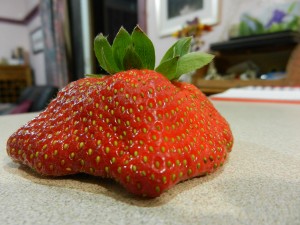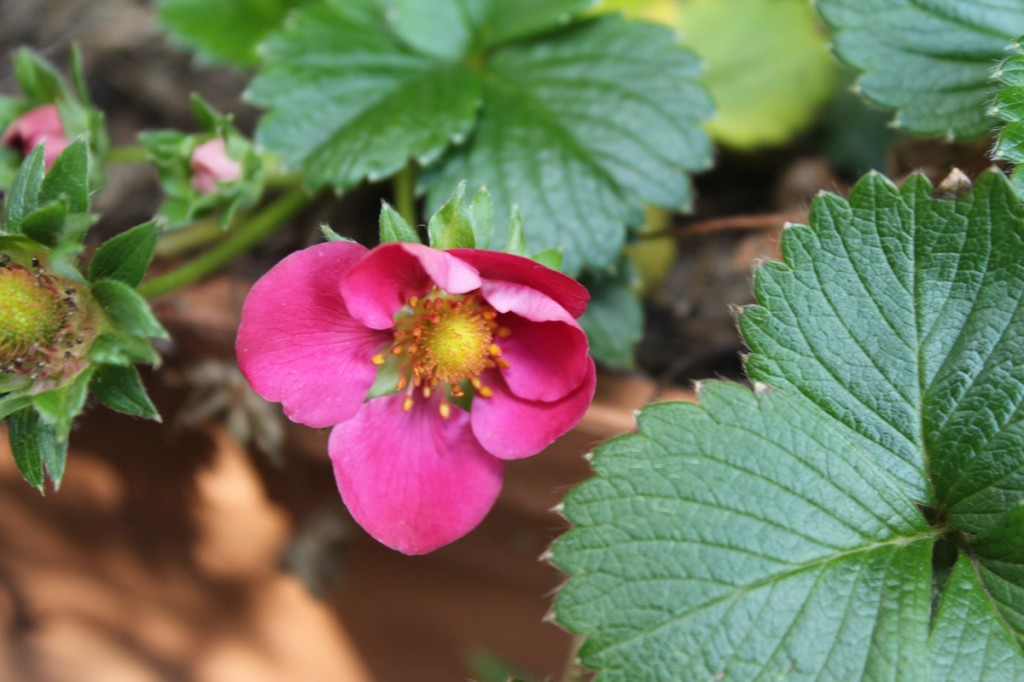The smell and taste of ripe summer strawberries is simply divine- and these plants are happy both pots and in the ground. Strawberries love full sun, but will dry out quickly in pots if they are exposed to the harsh afternoon sun in summer. They do best when planted with a slow release fertiliser, and top-ups of liquid fertiliser during flowering and fruiting. It is important to protect the fruit from birds and slugs and (unfortunately for us) Buster has also taken to helping himself to the ripe fruit if the pots are left within his reach. Netting is best for keeping the birds (and dog) from stealing your harvest, and if the plants are potted they tend to be protected from slugs.
Using sugar cane mulch or a similar product is important both for protecting the shallow root system and for keeping the ripening strawberries from making contact with the ground and spoiling. Strawberries are a perennial plant, and can produce fruit for years, however if productivity drops then you may want to consider pulling out the old plants and replacing with new ones. There are many different varieties of strawberry, which is great as planting a combination can increase the length of your harvest if you combine early and late fruiting varieties. There are also differences in fruit size and flavour, so mixed plants can give you a greater spread of flavours as well.
I keep my strawberries in pots, as this helps with protecting the fruit, and also allows me to “chase the sun” in winter, and protect them from the harsh summer sun. It also means that it is easier to protect and harvest the fruit, and importantly, protect the rest of my vegetable patch from the strawberries (which can be invasive if left unchecked). Strawberries are easy to propagate from runners, which sprout from the parent plant in autumn after fruiting ceases.
Propagation
One of the easiest plants to propagate, strawberries send out runners, which are essentially small new plants with the beginnings of a root system and leaves. They are attached to the parent plant by a long, strong and flexible cable which enables the parent plant to support the new plant while it establishes (think of it as a strawberry umbilical cord).
Once the new plants touch the ground, they send out their own root system, and the umbilical cord can be cut. The easiest way to propagate is to make up small pots with potting mix, and place these under the runners. Peg down the runners by the umbilical cord so the embryonic roots are in close contact with the soil – you can use a large paperclip bent into a “U” shape. Leave the cords attached for a few weeks while the root system establishes, and ensure to keep the small pots moist. Once you can gently tug the new plants, or you can see new leaf development, the root system has started to develop and you can cut the parent cord. Keep new plants moist and replant or give away once they are established.


